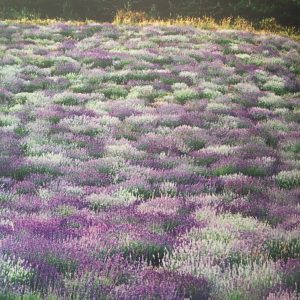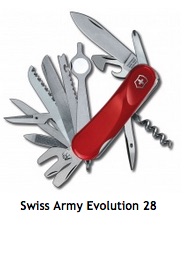Lavender Blues
- 17
- Sep

French lavender courtesy The Healing Intelligence of Essential Oils: The Science of Advanced Aromatherapy by Kurt Schnaubelt
(Free Ebook Below)
The scent, flower and color lavender carry many connotations and each deserves a closer examination. By the way, there’s nothing really blue –meaning sad– about lavender. Its effect is quite the opposite!
The blues in the title is a reference to one of the classical musics of the U.S.: The Blues. We’ll get to the color of lavender below.
First, indisputably, lavender is the most popular essential oil. It truly lives up to its reputation as the Swiss Army Knife (SAK) of all pure oils. An SAK can have many of the following features:
– tweezers – toothpick – scissors – file
– bottle cap opener – blade – key ring
– cuticle/manicure tool – wire stripper and much more (see below)
These pocket knives were distributed to conscripts of the French Army and after WWII American soldiers started calling them Swiss Army knives. There are men today who don’t go anywhere without their Leatherman, a close cousin of the SAK and also sold online on the official SAK site.
What does this mean for the uses of lavender? Heaps, but we’ll only do a short survey here.
Although the flower is a low-level bush which smells wonderful in full bloom, the essential oil can have a slight bite to it, and it seems to depend on the acid mantle of one’s skin. Perhaps this rather soft sharpness helps the body use lavender to adapt to emergency situations, and because of this the essential oil is known as an adaptogen.
Although all materials I’ve come across say you can use lavender on babies without diluting, I found in personal usage that I had to dilute this oil. I also began to notice that when others of high melanin content used the oil, they’d initially experience a bit of a sting. The “kinder” properties would take effect after a time. Once I got used to the oil I no longer had to dilute it.
Lavender as a sweet smelling flower has the effect of relaxing the body-mind-spirit. It contains the chemical constituents known as sesquiterpenes which possess the property of limiting the release of cortisol into the bloodstream, therefore enabling a calming feeling to take hold.
For this reason, lavender petals as well as those of rose, geranium, chamomile, and other flowers also high in sesquiterpenes, are used for potpourri (pronounced po-po-ree’). These dried flower mixtures are dependable ways to provide scent to drawers, clothing, closets and generally, rooms of the home including bedrooms and bathrooms.
Interesting facts about lavender:
- If organic, the color of the blossoms are not uniformly purple or lavender, and may range from lilac, pale blue, periwinkle, purple, and all the variations in between—on one plant and within one planting. Hybrid and clones are uniform; real lavender’s varying colors reflect sexual reproduction capability.
- The scent may vary from strongly sweet to vaguely pungent like the candy lavender that comes in tablet form. It’s hard to find now, but back in the day, Lavender lozenges were the first introduction to the scent for many of us.
- The Alps in the country of France is known for being the premiere regional source of lavender. Yet the country exports more lavender than it produces, due to the perfuming industry allowing the extending of real or “fine” lavender by combining it with hybrids and clones.
“French export data show that approximately 250 tons of so-called Fine Lavender are exported annually. The statistics of the association of Lavender growers in Volx show that less than 20 tons are in fact distilled. Ironically, this glaring fraud is obvious to those who can read the gas chromatograms…” according to The Healing Intelligence of Essential Oils: The Science of Advanced Aromatherapy by Kurt Schnaubelt, Ph.D. p.86 (2011, Rochester Vermont: Healing Arts Press)
A few things to do with lavender:
- Anoint your entire body with five-10 drops before taking a shower, per The Healing Intelligence. Repeat for five days to “slowly develop an awareness of the subtle changes in mood and feeling that the oil precipitates.” Schnaubelt, p.90
- Add 1 tsp/5ml lavender to 4 tsp/20 ml almond oil and store in a small dark-glass bottle, per The Holistic Herbal Directory by Penelope Ody. “Use as a massage medium for headaches, for dabbing on cold sores and minor burns,” as an addition to bathing for a “relaxing soak.” p. 201 (2009, East Sussex, UK: Metro Books/The Ivy Press)
- Use it in your lemonade. Add two to 15 drops, depending on how much you’re making.
- Scent the linen closet by placing several drops on your hand then wiping down your towels, washcloths, sheets and pillow cases in the closet.
- Make your own potpourri using lavender leaves or sachet gifts using the oil on fabrics and natural fibers that can absorb it easily.
- Use it in the Aroma Freedom Technique along with frankincense and a stress-fighting blend.
THIS WONDERFUL ARTICLE FULFILLS THE SWISS ARMY KNIFE – LAVENDER COMPARISON (FREE DOWNLOAD: The Healing Power Of Lavender by D.J. Fletcher
–Rev. Niamo Nancy Muid
Wikipedia lists for following uses of the Swiss Army knife.
Main tools:
* Large blade, imprinted on the blade shank of Victorinox models with “VICTORINOX SWISS MADE” to verify the knife’s authenticity.
* Small blade * Nail file / nail cleaner
* Nail file / nail cleaner
* Nail file / nail cleaner / metal file / metal saw
* Wood saw
* Fish scaler / hook disgorger / ruler in cm and inches
* Scissors
* Electrician’s blade / wire scraper
* Pruning blade
* Pharmaceutical spatula (cuticle pusher)
* Cyber Tool (bit driver)
* Pliers / wire cutter / wire crimper
* LED light
* Magnifying lens
* Phillips screwdriver
* Hoof cleaner
* Shackle opener / marlinspike
* Can opener / 3 mm slotted screwdriver
* Cap opener / 6 mm slotted screwdriver / wire stripper
* Combination tool containing cap opener / can opener / 5 mm slotted screwdriver / wire stripper
Smaller tools:
* Keyring
* Reamer
* Multipurpose hook
* 2mm slotted screwdriver
* Chisel
* Corkscrew or Phillips driver
* Mini screwdriver (designed to fit within the corkscrew)
Scale tools:
* Tweezers
* Toothpick
* Pressurized ballpoint pen (with a retractable version on smaller models, and can be used to set DIP switches)
* Stainless pin
* Digital clock / alarm / timer / altimeter /thermometer / barometer
Save
Save



